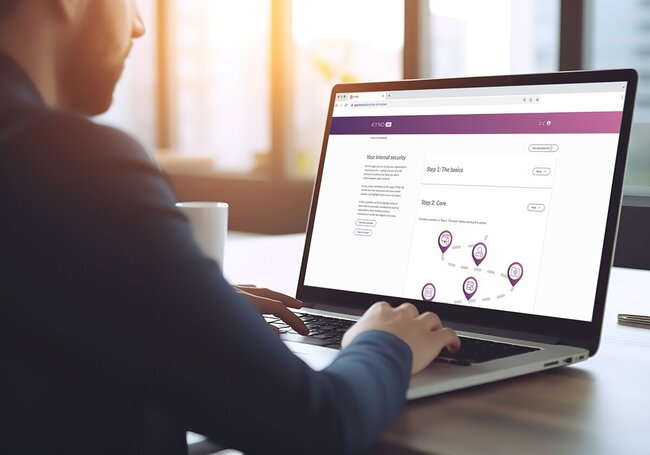
The technology of audio enhancement has grown significantly in the last decade. It has changed the face of numerous fields, including law and order. Across the globe, professional audio enhancement services help with tampered recordings that are part of case evidence.
The wing of audio enhancement that assists in law and order cases is called forensic audio enhancement. Advancements in forensic audio enhancement technology have significantly influenced the global investigation and resolution of crimes.
Service providers like Media Medic are popular for extending their forensic audio enhancement services to law enforcement agencies.
Forensic Audio Enhancement
Forensic audio enhancement is the process by which an audio engineer recovers the crucial audio elements in an evidence recording. The audio engineer cleans, enhances, and properly recovers the recording.
Many evidence recordings law enforcement agencies receive suffer from unclear audio or background disturbances. A forensic audio expert must do away with all the background disturbances and amplify the original audio.
Forensic audio enhancement service is widely used by people caught up in critical situations like court proceedings, criminal investigations, etc. Some recordings may even have evidence that can change the lives of the people at stake. Some recordings can uncover the truth about an inquiry. In short, forensic audio enhancement is a powerful tool that can alter the lives of many.
Services Included in Forensic Audio Enhancement
Forensic audio enhancement technology has broad implications and uses. Removing even the slightest disturbance to a significant technical disruption is extremely helpful. Some of the most common services available under forensic audio enhancement are as follows.
- Dialogue cleanup
- 911 call cleanup
- Voice enhancement
- Voicemail cleanup
- Remove wind noise
- Remove HVAC noise
- Volume decrease
- Echo removal
- Audio cleaning
- Removing rustling noise
- Volume increase
- Old recording cleaning, etc.
Beneficiaries of Forensic Audio Enhancement
As mentioned, forensic audio enhancement is highly useful to many in various legal dilemmas. Law enforcement agencies are considered the biggest beneficiaries of forensic audio enhancement.
Some sections of society that find forensic audio enhancement extremely powerful and helpful are as follows.
- Private Investigators
- Child Protection Services
- Prosecuting Attorneys
- Defense Lawyers
- Insurance Providers
- Various Law Enforcement Agencies
- Women Protection Services, etc.
Forensic Audio Enhancement: Types of Recordings
Forensic audio enhancement technology helps restore various recordings’ lost or unclear audio. Some recording formats that can be enhanced using the advanced audio enhancement technology are as follows.
- Smart Phone Recordings
- Voicemails
- Deposition Audio
- Handheld Recorder Audio
- Pocket Recorder Audio
- Cassette Tape
- Mini and Micro Cassette Tape
- Dash Cam Audio
- 911 Dispatch Audio
- Courtroom Recording
- Confidential Informant
- Wire Tap Recording
Forensic Audio Enhancement: Process
The whole forensic audio enhancement process happens in three different stages. They are as follows.
- Recovering the audio evidence.
- Enhancing the evidence.
- Analyzing and identifying the subjects in the recording.
Let’s look at each step in detail.
1. Recovering the audio evidence.
The primary step in the forensic audio enhancement process is to recover the available audio evidence from the tape. The taped device can be damaged. So, it might need to be put into another audio housing to retrieve the recording.
Recordings stored in the damaged device in digital files will be much easier to recover.
2. Enhancing the evidence.
Enhancing the evidence is the most crucial and time-consuming process. Filters are some basic enhancing options used in this stage of the enhancement process. Filters can remove the mild disturbances present in the background of the audio.
After applying basic filters and removing the most apparent disturbances, the audio enhancement experts use many techniques and tools to salvage the audio.
Some of the most common sound engineering tools and techniques used in forensic audio enhancement are as follows.
Critical Listening
Critical listening is equipment-aided listening that the audio enhancement experts perform. It helps to identify the properties of the recording, like the frequency ranges, recording levels, voice ratios, etc.
All such properties play a significant role in restoring the original audio effectively. The audio experts perform critical listening using advanced speakers, noise-cancelling professional headphones, etc.
Equalization
The Equalization process filters the unwanted frequencies from the recording. It also helps to amplify the wanted frequencies in the recording. At this stage, noises like buzzing, humming, etc., are removed entirely from the recording.
Compression
The audio compression process mainly helps with balancing the volume levels of the recording. It reduces the background volume and raises the actual audio volume. This stage works very well with recordings that have excessive background disturbances.
De-Reverb
De-reverb equipment helps with reducing the echo elements of the audio. Most audio experts use de-reverb tools or software to cancel the echo from the recording entirely. Removing the echo brings more clarity to the actual audio in the recording.
3. Analyzing and identifying the subjects in the recording.
Once the audio experts completely recover or enhance the evidence recording, they use it to identify the subjects or objects. Before that, they must technically authenticate the tape to ensure the recording is not tampered with or manipulated. This verification or authentication of the recording is a vital step in forensic audio enhancement.
After properly verifying the recording, audio experts use technologies like speech science or image content analysis to identify the persons or objects in the recording. Many other audio comparison techniques help match available audio with a live person.
Audio enhancement and the associated voice comparison technologies are still evolving. They still make crucial contributions to investigations and judicial proceedings in uncovering the truth.
Only a few rare forensic audio enhancement experts available today are capable enough to assist law enforcement agencies in solving the most complex cases. The best among them is the Media Medic forensic audio services. They help fix all kinds of audio and video files at a flat rate.
Media Medic services are accessible through their official website, available at https://www.mediamedic.studio/audio-forensic-service/. They perform audio and video cleanup in one of the quickest turnaround times in the industry. This USA-based forensic audio enhancement service receives rave reviews online for providing the best services possible.





